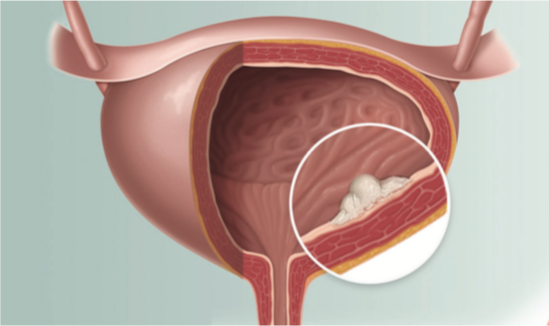How bladder cancer is treated at Guram Karazanashvili’s Urological Center.
Oncologist, Professor Guram Karazanashvili – a Georgian doctor whose surgeries have attracted the attention of American oncologists.
Bladder cancer – In oncology, oncological urology, and oncological surgery, the case of bladder cancer is considered one of the most complex surgeries.
Bladder cancer – In oncology, oncological urology, and oncological surgery, bladder cancer is considered one of the most complex surgeries.
At this stage, the bladder, prostate, and all surrounding organs and tissues are removed, leading to the complete removal of the bladder.
Doctor of Medical Sciences, Professor, President of the Georgian Association of Onco-Urology, Onco-Urologist Guram Karazanashvili.
This is the doctor who has long been involved in the creation of artificial bladders.
He has given many patients the opportunity to continue leading a full life after the removal of bladder cancer.
Interview with an AMBEBI.GE journalist.
One aspect of this complex surgery is the oncology part, where the cancer is removed, and the other aspect is functional, where the bladder is removed, and an alternative pathway for urine is created.
Today, there are many methods – sometimes, the bladder is created from skin, which resembles a plastic or cellophane pouch, or it is created from the large intestine.
In short, these methods are well established in modern medicine. In our case, however, we create an artificial bladder, meaning we form an artificial bladder using the patient’s own tissue. Nevertheless, this is one of the most challenging surgeries, often requiring a long recovery. On average, it takes about 7-8 hours, and significant external complications can arise. However, globally, this is a common practice.
Bladder cancer – what complications may follow?
Professor Guram Karazanashvili:
“In connection with the creation of an artificial bladder, some complications may arise, such as:
- Bowel problems
- Infections
- Peritonitis
- Urinary incontinence
- Loss of sexual function (potency)
However, in reality, this surgery is the only radical treatment option for bladder cancer — it is a life-saving operation.
That’s why we strive to ensure minimal complications and maximum comfort for the patient after surgery.
During this procedure, we offer a new nerve-sparing technique, which allows patients to maintain sexual function (the ability to have sexual relations) even after the removal of the prostate and bladder. This is especially important because it often concerns younger male patients. Preserving their sexual function helps maintain a normal family life.
We have also developed a special technique for preserving the sphincter, which minimizes the risk of urinary incontinence. After this surgery, the patient is able to control urination and does not require diapers, which is also a significant social issue.”
With the method you have developed, the patient is able to recover quickly and lead a life post-surgery that is almost the same as before the surgery. What exactly does the creation of an artificial bladder entail?
Professor Guram Karazanashvili:
“The bladder acts as a reservoir where urine is stored. A healthy bladder is essential for kidney health. When the bladder has problems, the kidneys are affected as well. The creation of an artificial bladder from the large intestine is possible, and after the procedure, the kidneys often function properly again. This means the patient does not require dialysis and can eventually receive a kidney transplant.
The more natural the artificial bladder is, the more complete it will be. This is the direction of the new bladder creation methods we use.
We take a segment of the large intestine, about 60 cm long, and we carefully shape it to replace the bladder, ensuring that the function of the large intestine is not disrupted. This method allows us to create an artificial bladder with minimal complications, keeping it as close as possible to the natural one.
However, the procedure must be performed very carefully, as blood flow must be maintained and there must be no excessive bleeding.
How long does this surgery take?”
“Currently, the most effective and comfortable method for such surgeries is used.
This technique has been developed over many years, and throughout this time, we have refined and improved it, adapting to new advancements.
As you mentioned, this method is recognized scientifically, clinically, and practically, and it was presented at a conference of urologists in America.”
**”Yes, the aforementioned association’s conference is one of the most prestigious worldwide, and it is a major scientific and practical event.”
The results are reviewed in detail, and only the highest standards are accepted.
The research should be of very high quality, and this is ensured by the scientific committee, which remains anonymous during the review process.
We do not know whose medical work will be selected, and likewise, they do not know which work will be chosen. The scientific committee for the review process is anonymous.
This is done to prevent any subjective factors from affecting the review, and the association is responsible for maintaining transparency in new developments.
It is important for us that the new method is presented with clear video documentation. This surgery was performed by me at our hospital in the operating room. Specifically, it was not disclosed beforehand. The essence of the operation, all technical nuances, and video instructions were explained. The surgery took place in November 2017. The patient is 58 years old, feeling well, and has restored potential. The patient does not have cancer
We have been working with similar methods. What kind of experience did you have? What does it personally mean to you?”
“Actually, one of the patients came to us, who we operated on 8 years ago, and they are still living a healthy life. It is of course gratifying.
How accessible is this operation from a material standpoint for patients?”
“It is definitely accessible. A similar type of surgery would cost tens of thousands of dollars in the USA or Turkey. Here, it is much more affordable, and the financial aspect is supported by public health insurance
Is the rehabilitation process long?”
“It is long, but after such a large-scale surgery, I cannot discharge the patient on the second day. If everything goes well, the rehabilitation process usually takes around 10 days.
Additionally, our experience is recognized by American urologists. Videos of the procedures are available, and those who see them will find that our techniques are accessible to urologists worldwide. If there is an image, it will be useful in daily practice.”
“Karazanashvili’s Robotic Center” – Treatment of oncological diseases with modern medical standards. Leading specialists, state-of-the-art equipment.







